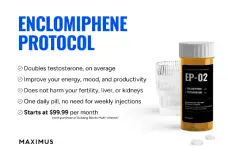madman
Super Moderator
Introduction
Men remain at risk for prostate cancer after simple prostatectomy. Despite our understanding of this, no parameters exist to inform urologists of prostate specific antigen (PSA) monitoring after surgery. This study aimed to compare initial postoperative PSA measurements and PSA kinetics after simple prostatectomy in patients with benign pathology (benign prostate hyperplasia; BPH) to those with known or incidentally-discovered prostate cancer.
Methods
We performed a retrospective review of all simple prostatectomies performed at two tertiary care centers in the United States between 2014-2023. Baseline patient demographics, oncologic diagnosis and treatment history, and preoperative and postoperative PSA values were collected. Records were divided into groups based on malignancy status (BPH alone vs. diagnosis of PCa).
Results
Out of 296 patients who had a simple prostatectomy with pre- and postoperative PSA testing, 235 had no prostate cancer. 27 of the 61 with prostate cancer were diagnosed before surgery, and 34 were diagnosed incidentally.There was no difference in preoperative PSA between the groups (9.6 ng/mL vs 10.6 ng/mL, p = 0.12). Patients with BPH had an initial postoperative PSA value of 0.72 ng/mL compared to 1.37 ng/mL in those with cancer (p < 0.01). PSA was reduced by 89% in BPH compared to 78% in the malignant cohort (p < 0.01). PSA velocity after surgery was significantly elevated in those with underlying PCa (0.40 ng/mL/year vs 0.004 ng/mL/year for men with BPH; p < 0.01). Using a[TM1]n initial postoperative PSA threshold of 1.5 ng/mL, this would detect 30% of grade group (GG) 1+ prostate cancer, 29% of GG2+ prostate cancer, and result in 10% of patients with BPH undergoing negative workups.
Conclusions
For patients who have undergone a simple prostatectomy, the initial postoperative PSA level and PSA velocity can help determine the intensity of ongoing screening for prostate cancer. We propose close surveillance (PSA checks every 3-6 months) as well as a prostate MRI and/or biopsy to men with a postoperative PSA above 1.5 ng/mL.

Men remain at risk for prostate cancer after simple prostatectomy. Despite our understanding of this, no parameters exist to inform urologists of prostate specific antigen (PSA) monitoring after surgery. This study aimed to compare initial postoperative PSA measurements and PSA kinetics after simple prostatectomy in patients with benign pathology (benign prostate hyperplasia; BPH) to those with known or incidentally-discovered prostate cancer.
Methods
We performed a retrospective review of all simple prostatectomies performed at two tertiary care centers in the United States between 2014-2023. Baseline patient demographics, oncologic diagnosis and treatment history, and preoperative and postoperative PSA values were collected. Records were divided into groups based on malignancy status (BPH alone vs. diagnosis of PCa).
Results
Out of 296 patients who had a simple prostatectomy with pre- and postoperative PSA testing, 235 had no prostate cancer. 27 of the 61 with prostate cancer were diagnosed before surgery, and 34 were diagnosed incidentally.There was no difference in preoperative PSA between the groups (9.6 ng/mL vs 10.6 ng/mL, p = 0.12). Patients with BPH had an initial postoperative PSA value of 0.72 ng/mL compared to 1.37 ng/mL in those with cancer (p < 0.01). PSA was reduced by 89% in BPH compared to 78% in the malignant cohort (p < 0.01). PSA velocity after surgery was significantly elevated in those with underlying PCa (0.40 ng/mL/year vs 0.004 ng/mL/year for men with BPH; p < 0.01). Using a[TM1]n initial postoperative PSA threshold of 1.5 ng/mL, this would detect 30% of grade group (GG) 1+ prostate cancer, 29% of GG2+ prostate cancer, and result in 10% of patients with BPH undergoing negative workups.
Conclusions
For patients who have undergone a simple prostatectomy, the initial postoperative PSA level and PSA velocity can help determine the intensity of ongoing screening for prostate cancer. We propose close surveillance (PSA checks every 3-6 months) as well as a prostate MRI and/or biopsy to men with a postoperative PSA above 1.5 ng/mL.













